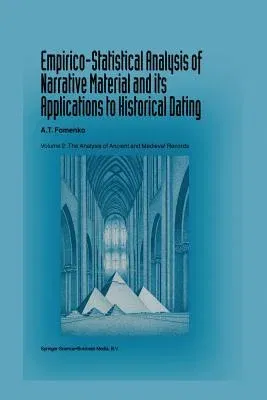A T Fomenko
(Author)Empirico-Statistical Analysis of Narrative Material and Its Applications to Historical Dating: Volume II: The Analysis of Ancient and Medieval RecordsPaperback - Softcover Reprint of the Original 1st 1994, 3 October 2013

Qty
1
Turbo
Ships in 2 - 3 days
In Stock
Free Delivery
Cash on Delivery
15 Days
Free Returns
Secure Checkout
Print Length
462 pages
Language
English
Publisher
Springer
Date Published
3 Oct 2013
ISBN-10
9401714150
ISBN-13
9789401714150
Description
Product Details
Author:
Book Edition:
Softcover Reprint of the Original 1st 1994
Book Format:
Paperback
Country of Origin:
NL
Date Published:
3 October 2013
Dimensions:
23.39 x
15.6 x
2.46 cm
ISBN-10:
9401714150
ISBN-13:
9789401714150
Language:
English
Location:
Dordrecht
Pages:
462
Publisher:
Weight:
666.78 gm

